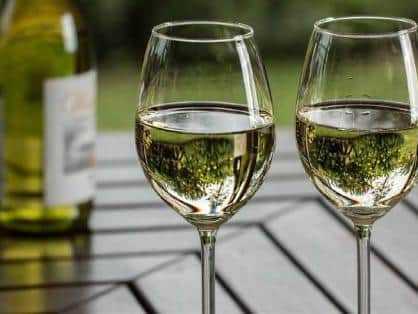Matt Monk of the Whalley Wine Shop explains his love for Chardonnay
and live on Freeview channel 276
Some time ago, I was on a first aid training week, when the trainer asked if we all understood ABC. Quick as a flash, someone piped up: “Anything But Chardonnay!!” we all laughed, the trainer gave us all a hard stare, and we missed our coffee break (It means Airway/Breathing/Circulation).
I’d never really given the wine-related phrase much thought to its meaning, it was early on in my wine career, but it slowly grew as I heard it more frequently. All through the pubs, restaurants and wine bars, when it came to choosing a glass of wine, ‘Anything But Chardonnay’ was commonplace, though when the wine Riesling was suggested, a bigger groan could be heard, but that’s another article!
Advertisement
Hide AdAdvertisement
Hide AdEarly on in the explosion of wine sales in supermarkets, Chardonnay was everywhere in the aisles. Showcasing big ripe fruit flavours, sweet spices from newly made oak barrels, the wine was a consummate favourite with the public. But as always with the favourite, the delight can wane, and the ABC slogan began to be heard, Pinot Grigio and Sauvignon Blanc became new favourites.


A slight twist on the phrase ABC was to add “but I do like Chablis”. From a region in the north of Burgundy, Chablis grows mainly Chardonnay, but the style is quite removed from the oaky tropical fruit style of the new world wines in the 90s and 2000s. Crisp, mineral and lean, some people think it comes from the chalky Kimmeridgean soils of the region, crammed full of tiny fossilised oysters. Mainly, it is from a cooler growing season and the use of stainless steel tanks used in the production of the majority of the wines of the region.
This is where the sheer variety of Chardonnay styles now comes into play, all around the winemaking world, cool and warm climates, high altitude and low valleys. These flavours and aromas change depending where the grapes are grown, what type of Chardonnay vine is used, how the winemaker picks the grapes, how they store the wine before bottling and how the wine is allowed to develop. All these parts change the wine’s final destination, its ‘Tastination’ (sorry).
When a grape grower is selecting the grapes they want to grow, they are offered a variety of ‘clones’, vines of the same grape variety but with subtle differences in crop size, flavour profiles and its best suited growing conditions. Once selected, they plant these in a certain way depending on how they need the vine to grow to help in harvesting the grape (by hand or machine) and if they need to use the vine leaves to protect the grapes from getting sunburn or if to remove the leaves to gain more sun for the grapes.
Advertisement
Hide AdAdvertisement
Hide AdWhen it comes to harvest time, do they pick early to keep some of the fresh acidity present in the grape juice for a fresher flavour or let the grapes mature for more sugar (which converts to more alcohol) and riper fruity flavours.
Once they have pressed the grapes, does the juice go into stainless steel tanks to keep the fresh, precise flavours of acidity, or go into oak barrels to soften the acidity and add some oaky flavour notes of toast, nuts, vanilla and cinnamon. The longer they spend in the barrels the more pronounced the oaky flavours. Do they use brand new barrels, a huge investment, a new barrel can cost €600 and hold only 300 bottles worth of wine. Or use a mix of new and old barrels to balance the flavours, or use large tanks and dip oak staves into the wine to add a small influence of those oak flavours, and so we arrive at our ‘Tastination’.
These choices for the winemaker are endless and that gives us, the wine consumers, so much choice that the phrase “Anything But Chardonnay” changes to “Amazingly Brilliant Chardonnay”. And this is why I love Chardonnay, if you couldn’t already tell, all these varied and different styles to match all the varied occasions, and available from around the winemaking world.
Chard choice
Talmard Macon Uchizy £14.99: Ripe and citrus fruits on the nose and palate, there’s also more fruit on the palate with apricot and nectarine. It finishes with a touch of creaminess.
Advertisement
Hide AdAdvertisement
Hide AdWestcott Vineyards Chardonnay £19.99: This wine comes from the Niagara region of Canada, but what a wine! This wine really opens up in the glass to give aromas of baked apple and pineapple. There is a little stone, flinty finish on the palate.
Gusbourne Chardonnay £28.99: These grapes are grown on the slopes of Kent. Aromas range from white blossom to stone fruits to citrus peel and pineapple. Finishing with a hint of saline, like you’ve walked along a beach and licked your lips!!